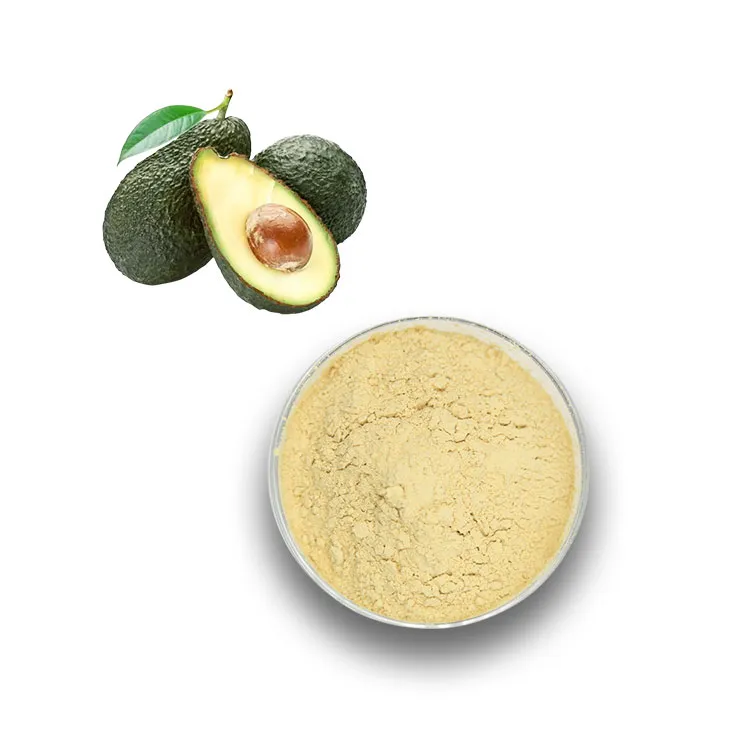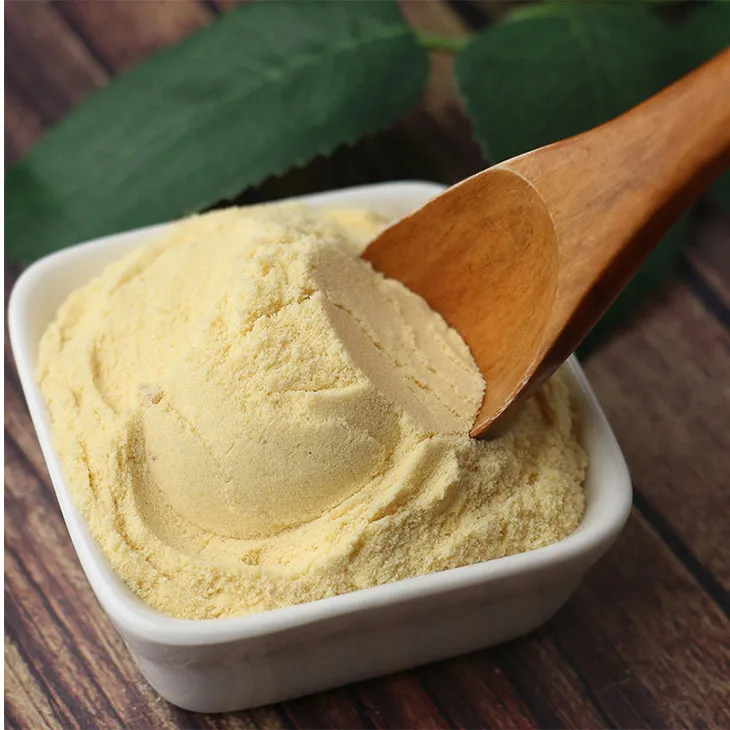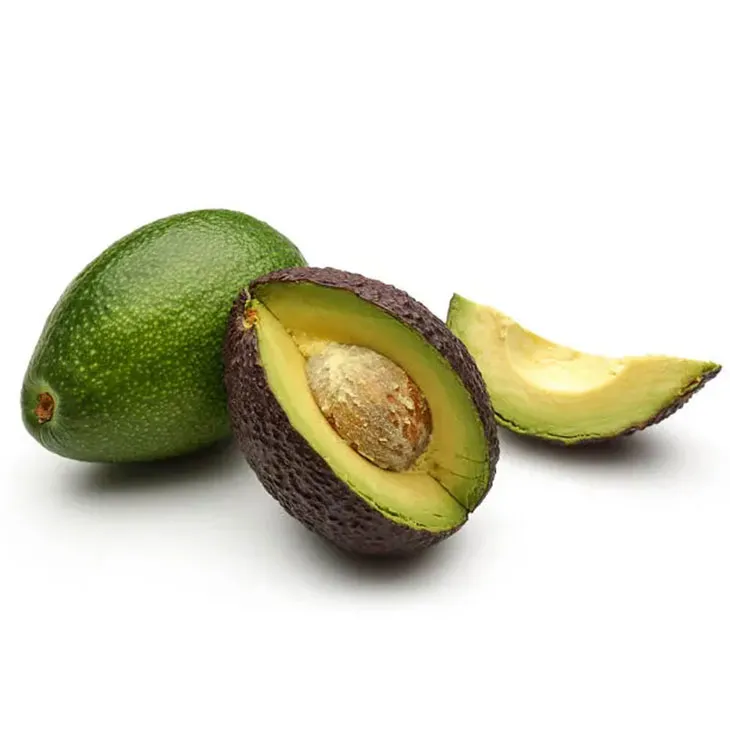- 0086-571-85302990
- sales@greenskybio.com
How to extract avocado extract powder from plants?
2024-11-26

1. Introduction
Avocado Extract Powder has gained significant popularity in recent years due to its numerous beneficial properties. It is rich in healthy fats, vitamins, and antioxidants, making it a valuable ingredient in various industries, including cosmetics, food, and pharmaceuticals. Extracting Avocado Extract Powder from plants involves a series of carefully orchestrated steps, starting from the selection of the right raw materials to the final purification and drying processes. This article aims to provide a comprehensive guide on how to obtain high - quality Avocado Extract Powder.

2. Selection of Ripe Avocados
The quality of the raw material is of utmost importance when it comes to extracting avocado extract powder. Ripe avocados are the ideal choice for this process. Here are some factors to consider when selecting avocados:
2.1 Physical Appearance
Look for avocados with a dark, almost black skin. This indicates that they are ripe. The skin should be free from blemishes, cuts, or soft spots. A smooth and shiny skin is a good sign of a healthy avocado.
2.2 Texture
Gently squeeze the avocado. It should yield slightly to pressure but not be overly soft. If it is too hard, it is not ripe enough, and if it is too mushy, it may be overripe. The flesh inside should be a creamy, pale - green color.
2.3 Origin
Knowing the origin of the avocados can also be beneficial. Avocados from regions known for their high - quality produce are more likely to yield better extract powder. For example, avocados from Mexico or Peru are often highly regarded in the market.

3. Extraction Methods
There are several methods available for extracting substances from avocados to obtain the extract powder. Two of the most common methods are solvent extraction and mechanical pressing. Each method has its own set of advantages and disadvantages.
3.1 Solvent Extraction
- Principle: Solvent extraction involves using a suitable solvent to dissolve the desired components from the avocado. The solvent penetrates the avocado tissue and selectively extracts the compounds of interest, such as the healthy fats, vitamins, and antioxidants.
- Common Solvents: Some of the commonly used solvents in avocado extraction include hexane, ethanol, and ethyl acetate. Hexane is a non - polar solvent that is effective in extracting lipids. Ethanol, on the other hand, is a polar solvent that can extract a wider range of compounds, including polar antioxidants.
- Advantages:
- High extraction efficiency: Solvent extraction can extract a large amount of the desired components from the avocado, resulting in a relatively high - yield of the extract.
- Selectivity: Different solvents can be chosen based on the specific compounds to be extracted, allowing for a more targeted extraction process.
- Disadvantages:
- Solvent Residue: One of the major concerns with solvent extraction is the potential for solvent residue in the final extract powder. This can be a problem, especially if the extract is intended for use in food or pharmaceutical applications. Residual solvents may pose health risks if not removed completely.
- Cost and Safety: Some solvents, such as hexane, are flammable and require special handling procedures. Additionally, the cost of solvents and the equipment needed for solvent extraction can be relatively high.
3.2 Mechanical Pressing
- Principle: Mechanical pressing involves applying physical pressure to the avocados to squeeze out the oil and other components. This can be done using a hydraulic press or a screw press. The pressure breaks down the avocado cells and releases the contents.
- Advantages:
- Natural and Solvent - Free: Mechanical pressing does not require the use of solvents, making it a more natural and "clean" extraction method. This is especially important for applications where solvent - free products are preferred, such as in some organic food products.
- Simplicity: The process of mechanical pressing is relatively straightforward and does not require complex equipment or chemical handling procedures.
- Disadvantages:
- Lower Yield: Compared to solvent extraction, mechanical pressing generally results in a lower yield of the extract. This is because not all of the components can be effectively squeezed out using physical pressure alone.
- Quality Variability: The quality of the extract obtained through mechanical pressing can be more variable compared to solvent extraction. This is due to factors such as the pressure applied, the type of press used, and the quality of the avocados.

4. Purification
After the extraction process, whether it is by solvent extraction or mechanical pressing, the resulting extract usually contains impurities that need to be removed. Purification is a crucial step in obtaining high - quality avocado extract powder.
4.1 Filtration
- Initial Filtration: The first step in purification is often filtration. This can be done using a filter paper or a mesh filter. Filtration helps to remove large particles such as pieces of avocado flesh, skin, or other debris that may be present in the extract.
- Fine Filtration: For a more thorough purification, fine - filtration methods can be used. This may involve using a membrane filter with a smaller pore size. Fine filtration can remove smaller impurities such as fine particles of insoluble compounds.
4.2 Centrifugation
Centrifugation is another effective purification method. By spinning the extract at high speeds in a centrifuge, the denser components can be separated from the lighter ones. This helps to remove any remaining impurities that may be suspended in the extract. The supernatant, which contains the purified extract, can then be collected for further processing.

5. Drying
Once the extract has been purified, the next step is drying to convert it into a powder form. There are different drying methods available, each with its own characteristics.
5.1 Spray Drying
- Principle: Spray drying involves atomizing the liquid extract into a fine mist and then passing it through a hot air stream. The hot air quickly evaporates the moisture from the droplets, leaving behind dry powder particles.
- Advantages:
- Fast Drying: Spray drying is a relatively fast drying method, which helps to preserve the quality of the extract. It can also handle large volumes of extract in a short period of time.
- Fine Particle Formation: The resulting powder particles are usually fine and uniform in size, which is desirable for many applications. This makes the powder easy to mix and incorporate into other products.
- Disadvantages:
- High Energy Consumption: Spray drying requires a significant amount of energy to heat the air and maintain the drying process. This can make it a relatively expensive drying method.
- Potential for Heat - Sensitive Component Degradation: If the extract contains heat - sensitive components, there is a risk of degradation during the spray drying process due to the high temperatures involved.
5.2 Freeze Drying
- Principle: Freeze drying, also known as lyophilization, involves freezing the extract first and then subjecting it to a vacuum. Under vacuum conditions, the ice in the frozen extract sublimates directly from the solid state to the gaseous state, leaving behind the dry powder.
- Advantages:
- Preservation of Quality: Freeze drying is known for its ability to preserve the quality of heat - sensitive and volatile components in the extract. It causes minimal damage to the bioactive compounds, making it an ideal method for extracts with valuable and delicate components.
- Long - Term Stability: The powder obtained through freeze drying has good long - term stability, as it is less likely to be affected by factors such as moisture and oxygen.
- Disadvantages:
- High Cost and Long Processing Time: Freeze drying is a relatively expensive drying method due to the need for specialized equipment and long processing times. It is also a relatively slow process compared to spray drying.
6. Conclusion
Extracting avocado extract powder from plants is a multi - step process that requires careful attention to each stage. Starting from the selection of ripe avocados as the raw material, through different extraction methods such as solvent extraction or mechanical pressing, followed by purification and drying steps, the final product - high - quality avocado extract powder - can be obtained. Each step has its own significance and challenges, and understanding these aspects is crucial for those interested in producing or using avocado extract powder. With the increasing demand for natural and healthy ingredients, the proper extraction of avocado extract powder becomes even more important in various industries.
FAQ:
Q1: Why is it important to select ripe avocados for extracting avocado extract powder?
Ripe avocados are crucial for extraction because they contain higher levels of the desired compounds. Unripe avocados may lack the full complement of nutrients and bioactive substances. The ripeness affects the quality and quantity of the extractable components, ensuring that the final avocado extract powder has the maximum beneficial properties.
Q2: What are the main advantages of solvent extraction method in obtaining avocado extract powder?
The solvent extraction method can effectively dissolve and separate the target compounds from the avocado. It can achieve a relatively high extraction efficiency, allowing for the extraction of a wide range of substances. This method can also be adjusted to target specific components based on the choice of solvent, which is beneficial for obtaining a more purified and concentrated extract for the production of high - quality avocado extract powder.
Q3: What are the disadvantages of mechanical pressing for avocado extract powder extraction?
Mechanical pressing may not be able to extract all the valuable components from the avocado. Some substances may be left behind in the residue. It also requires more physical force and appropriate equipment, and the extraction yield may be relatively lower compared to some other methods. Additionally, the quality of the extract obtained by mechanical pressing may be less pure as it may contain more impurities.
Q4: How does the purification step contribute to the quality of avocado extract powder?
The purification step removes impurities, such as unwanted plant materials, residual solvents (if solvent extraction is used), and other non - target substances. This results in a cleaner and more concentrated extract, which in turn leads to a higher - quality avocado extract powder with better defined and more consistent properties, such as purity, bioactivity, and stability.
Q5: What is the significance of the drying step in the production of avocado extract powder?
The drying step is essential as it converts the liquid extract into a powder form. This not only makes the product easier to store, transport, and handle but also helps in preserving the active components. By removing the water content, the risk of microbial growth and degradation of the extract is reduced, ensuring the long - term stability and quality of the avocado extract powder.
Related literature
- Avocado Bioactive Compounds: Extraction and Potential Health Benefits"
- "Advanced Techniques for Avocado Extract Production"
- "The Science Behind Avocado Extract Powder: From Plant to Product"
- ▶ Hesperidin
- ▶ Citrus Bioflavonoids
- ▶ Plant Extract
- ▶ lycopene
- ▶ Diosmin
- ▶ Grape seed extract
- ▶ Sea buckthorn Juice Powder
- ▶ Fruit Juice Powder
- ▶ Hops Extract
- ▶ Artichoke Extract
- ▶ Mushroom extract
- ▶ Astaxanthin
- ▶ Green Tea Extract
- ▶ Curcumin
- ▶ Horse Chestnut Extract
- ▶ Other Product
- ▶ Boswellia Serrata Extract
- ▶ Resveratrol
- ▶ Marigold Extract
- ▶ Grape Leaf Extract
- ▶ New Product
- ▶ Aminolevulinic acid
- ▶ Cranberry Extract
- ▶ Red Yeast Rice
- ▶ Red Wine Extract
-
Pine bark Extract Powder
2024-11-26
-
Senna Leaf Extract
2024-11-26
-
Red Date Extract
2024-11-26
-
Andrographis Paniculata Extract Powder
2024-11-26
-
Acerola Juice Powder
2024-11-26
-
Grape Leaf Extract
2024-11-26
-
Black Rice Extract
2024-11-26
-
Reishi mushroom extract
2024-11-26
-
Polygonum multiflorum extract
2024-11-26
-
Hops Extract
2024-11-26





















